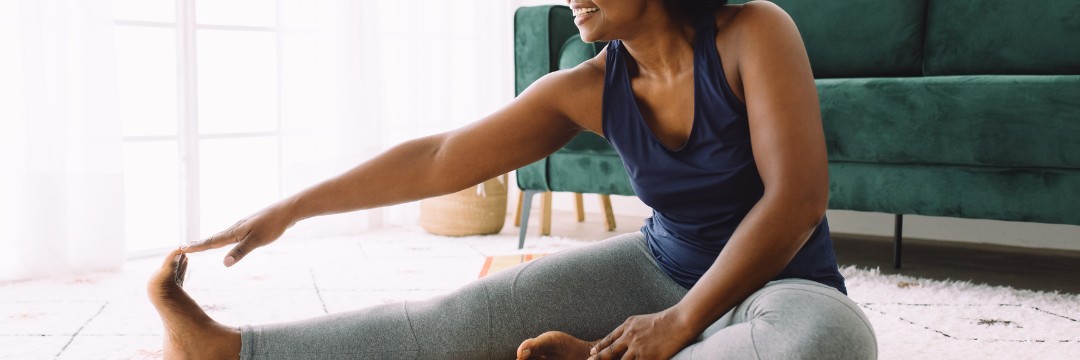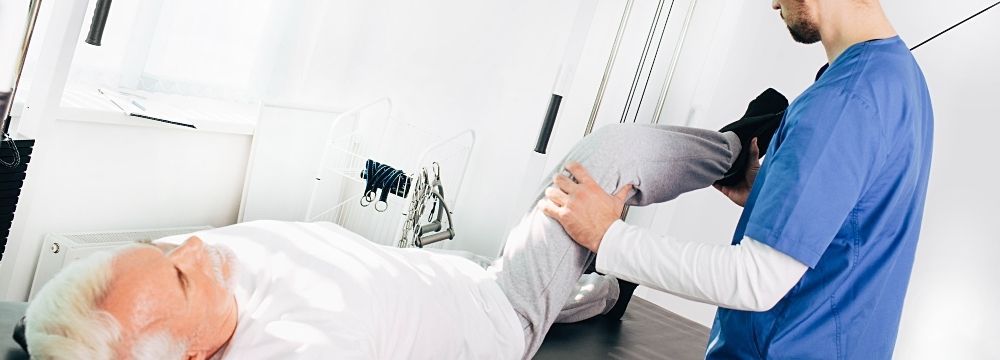
Stretching is beneficial, but like any activity, overdoing it can have negative consequences.
At PREMIER Orthopaedic & Trauma Specialists Physical Therapy, we understand that flexibility and stretching are essential components of physical wellness; however, excessive stretching can cause more harm than good. Our Physical Therapist Assistant Bella Batista brings a background in sports medicine and a lifelong passion for healing to every session. At Premier Ortho, we are focused on helping patients prevent strain and build lasting flexibility in a sustainable manner.
If you’re someone who stretches regularly or wants to start, this guide is for you. We’ll explore the benefits of proper stretching, the risks of overexertion, and how to develop a smart flexibility routine that supports your mobility, not compromises it.
Benefits of Stretching
Stretching helps increase your range of motion (ROM), providing your joints with the mobility they need to support everyday movement, as well as maintain proper posture and alignment. Without regular stretching, muscles tend to shorten and tighten, increasing our risk of joint pain, strains, and muscle damage.
A consistent routine of stretching helps protect against common issues, such as back pain, joint stiffness, or poor balance. Just be aware that there is such a thing as taking it too far.
When It’s Too Much
Overstretching can be more than uncomfortable – it can be dangerous. When you push your joints and muscles past their normal range of motion, you risk weakening the very structures that are supposed to support you. Overstretching can cause:
- Joint instability: Ligaments and tendons act like scaffolding around your joints, and overstretching can weaken them.
- Muscle strain or microtears: Overexertion can lead to tiny tears in muscle fibers, causing pain and inflammation.
- Hypermobility: Joints that move beyond their natural limits cause the ligaments and tendons that typically stabilize them to become overstretched and lose their ability to hold things in place.
- Masking imbalances: If you only focus on stretching tight muscles without strengthening the weak ones, you might temporarily feel relief, but the root cause stays hidden.
Overstretching may even lead to long-term wear and tear, particularly around vulnerable joints such as the hips, knees, and spine.
Signs You Might Be Overstretching
Are you unsure if you’ve crossed the line from helpful to harmful? Your body will usually let you know if you listen. Watch for these red flags:
- Persistent soreness or tightness
- A feeling of joint “looseness” or instability
- Tingling, numbness, or sharp pain during or after stretching
- Reduced strength or coordination
Stretching should feel like mild tension, not pain. If you’re wincing or holding your breath during a stretch, that’s your body’s way of saying, “Hey, ease up!” If a stretch hurts, stop.
Stretching when your muscles are cold can also increase the risk of injury. Always warm up first with 5-10 minutes of walking or light movement before stretching.
If you’re wondering how to get the benefits of stretching without the side effects, do it with purpose and body posture awareness. Here’s how to do it right:
- Warm up first: A quick walk or light cardio makes your muscles more pliable.
- Use dynamic stretches before activity to help wake up the muscles and prepare them to move, such as with leg swings or arm circles.
- Save static stretches for after workouts: When your muscles are warm and more receptive to lengthening, try a seated hamstring stretch, child’s pose, or shoulder cross-body hold.
- Hold the pose: Bouncing during a stretch can cause tearing, so hold each stretch gently for 20–30 seconds instead.
- Don’t chase pain: Mild discomfort is okay, but sharp, stabbing, or lingering pain? Not okay. Pull back to where it only feels like tension.
- Be specific: Focus on stretching the areas that are tight or limited in mobility, rather than trying to stretch everything at once.
- Be consistent: Flexibility takes time, and you won’t undo months of tightness in one at-home session or yoga class.
Don’t stretch just to be more flexible; stretch to restore movement where your body needs it. A physical therapist can help pinpoint areas with limited mobility so your efforts are targeted and effective.
Stretching Is Good – Until It’s Not
Bella Batista, PTA, has worked with countless patients. Her top tips?
- Get evaluated: A licensed physical therapist can help you identify what your body needs – more mobility, more stability, or both.
- Strengthen to support: Flexibility without strength is like a car without brakes. Include strength training alongside your stretching.
- Use tools wisely: Foam rollers and resistance bands can be helpful, but only when used correctly and intentionally.
- Know your limits: If you’re already hypermobile (double-jointed and very flexible), focus on control and stability, rather than attempting deeper stretches.
Stretching is an essential part of a healthy routine, as it helps improve mobility, posture, circulation, and overall recovery. But like any form of movement, it needs to be done the right way and for the right reasons.
Overstretching can damage muscles, destabilize joints, and increase your risk of injury, potentially causing permanent damage. But by learning to stretch smarter, you can keep your body moving well for the long haul.
At PREMIER Orthopaedic & Trauma Specialists, Bella and the rest of our physical therapy team are here to help you find that sweet spot between flexibility and function. Whether you’re recovering from surgery, managing a chronic condition, or simply trying to improve your daily movement, we’re committed to creating personalized, sustainable plans that help your body function optimally and feel its best.
Have questions about your stretching routine? Book a visit with our team.







